Onwentsia Club: Social Center from Golf to Horses

Following the Lake Forest Golf Club's 1895 season, increased enthusiasm led Lake Forest golfers to look west, beyond Leander McCormick’s property, so a proper 18-hole course could be built. They purchased 175 acres of land from architect Henry Ives Cobb, as well as his country home, which would house Onwentsia members for over 30 years, as their first clubhouse.
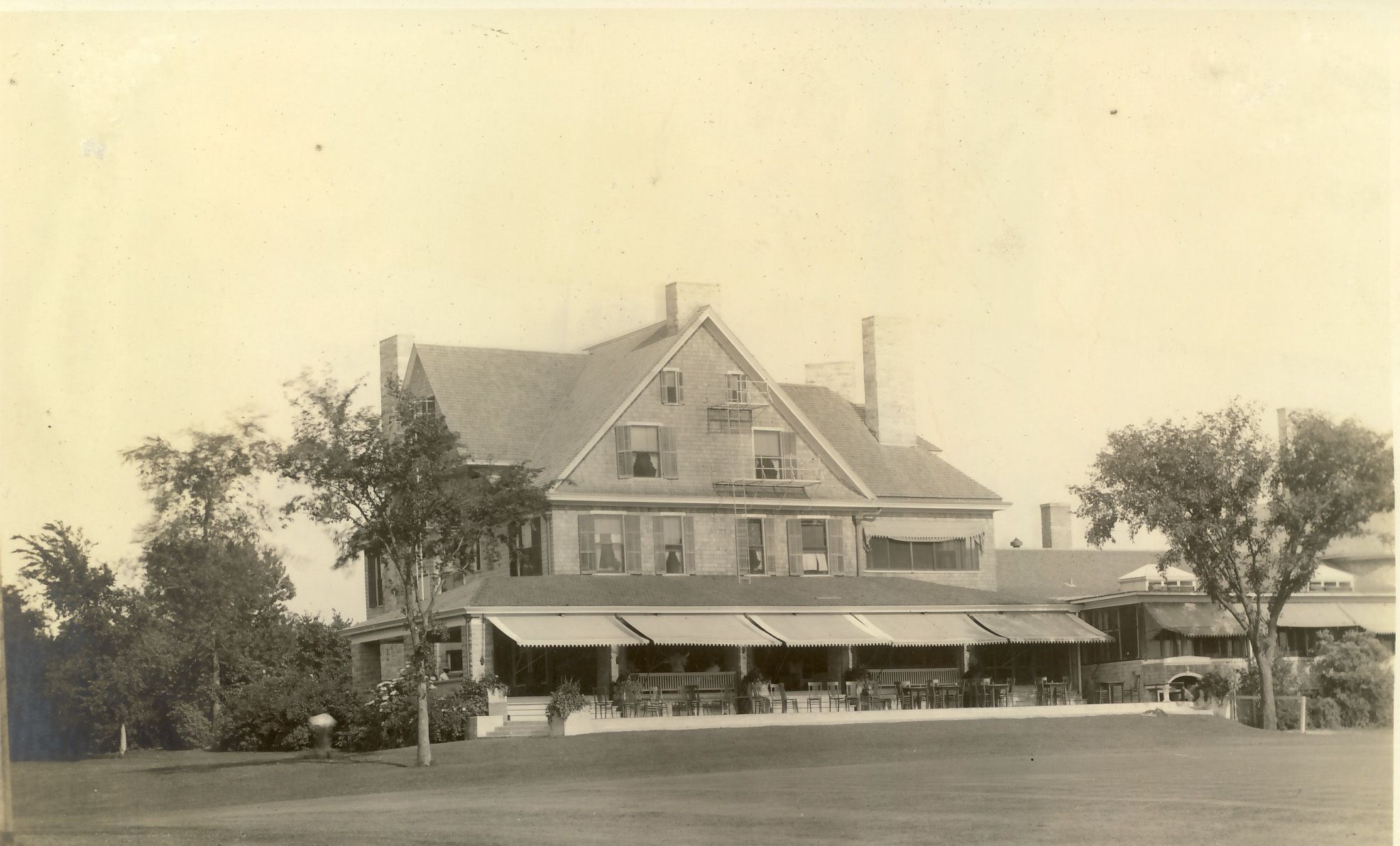
Onwentsia’s quintet of famed course designers featured some of the most noted names in golf, connecting the club with storied American and Scottish golf tradition. Charles Blair Macdonald and his son-in-law Henry Whigham laid out the front nine, and Herbert Tweedie and brothers Robert and James Foulis the back nine.
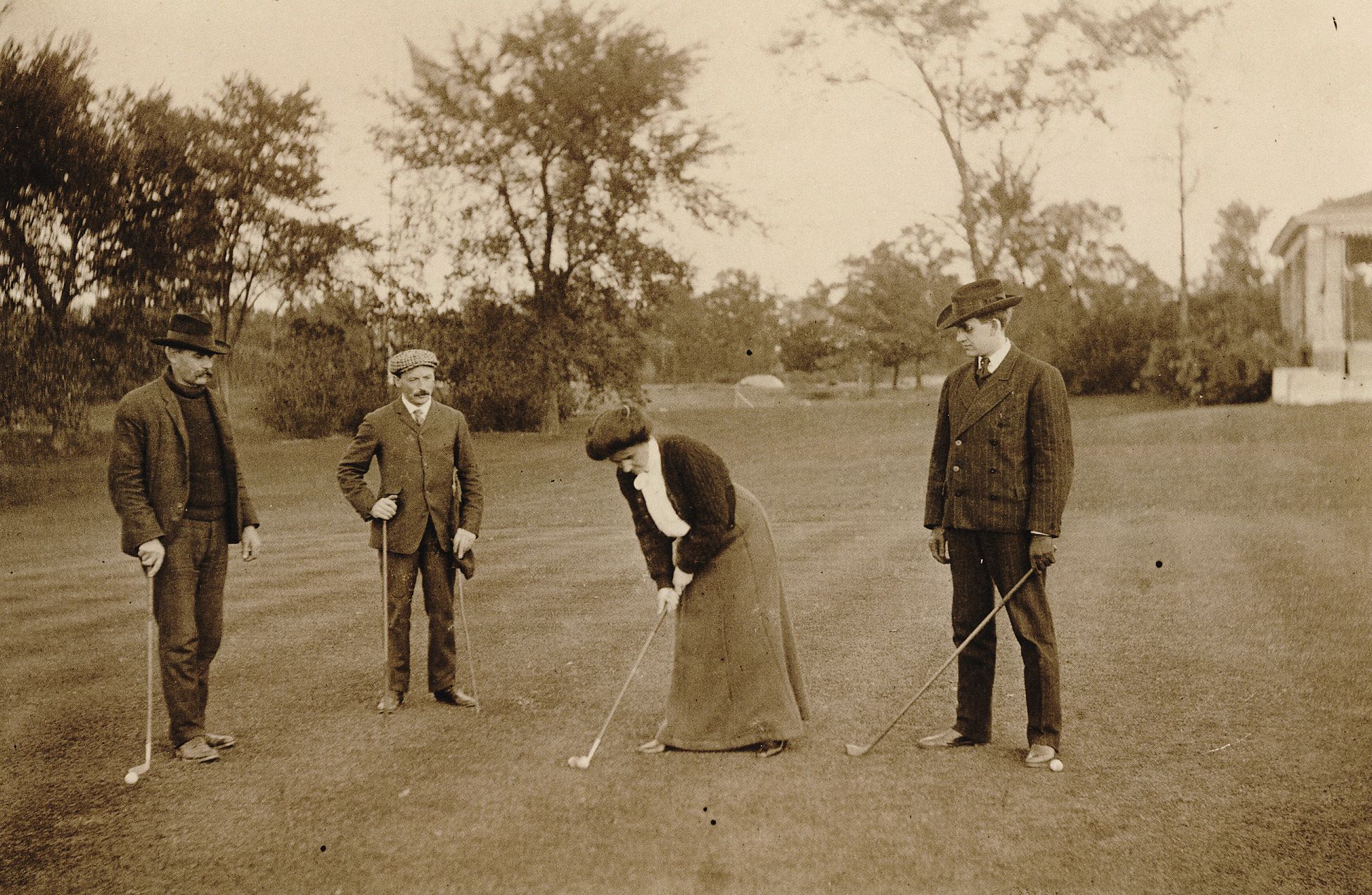
Because the founders wanted to offer other activities in addition to golf, “Lake Forest Golf Club” was deemed too narrow, and a new name was needed. First club president Hobart Chatfield-Taylor finally supplied one from his Iroquois dictionary: Onwentsia, which he said meant “a meeting place for sporting braves and their squaws.”
The original 1895 membership included six McCormicks, eight Farwells, and nearly all of Chicago’s leading industrialists and financiers. Initial annual dues were $35, and the club kept the Sabbath sacred, banning golf on Sundays. Alcohol, however, was allowed; although Lake Forest had been a dry community since its founding, the Onwentsia Club was technically not in the Lake Forest city limits, and the town fathers, largely club members, saw no need to change that fact. The tract of land containing the club was not annexed to the city until 1926…in the middle of Prohibition.
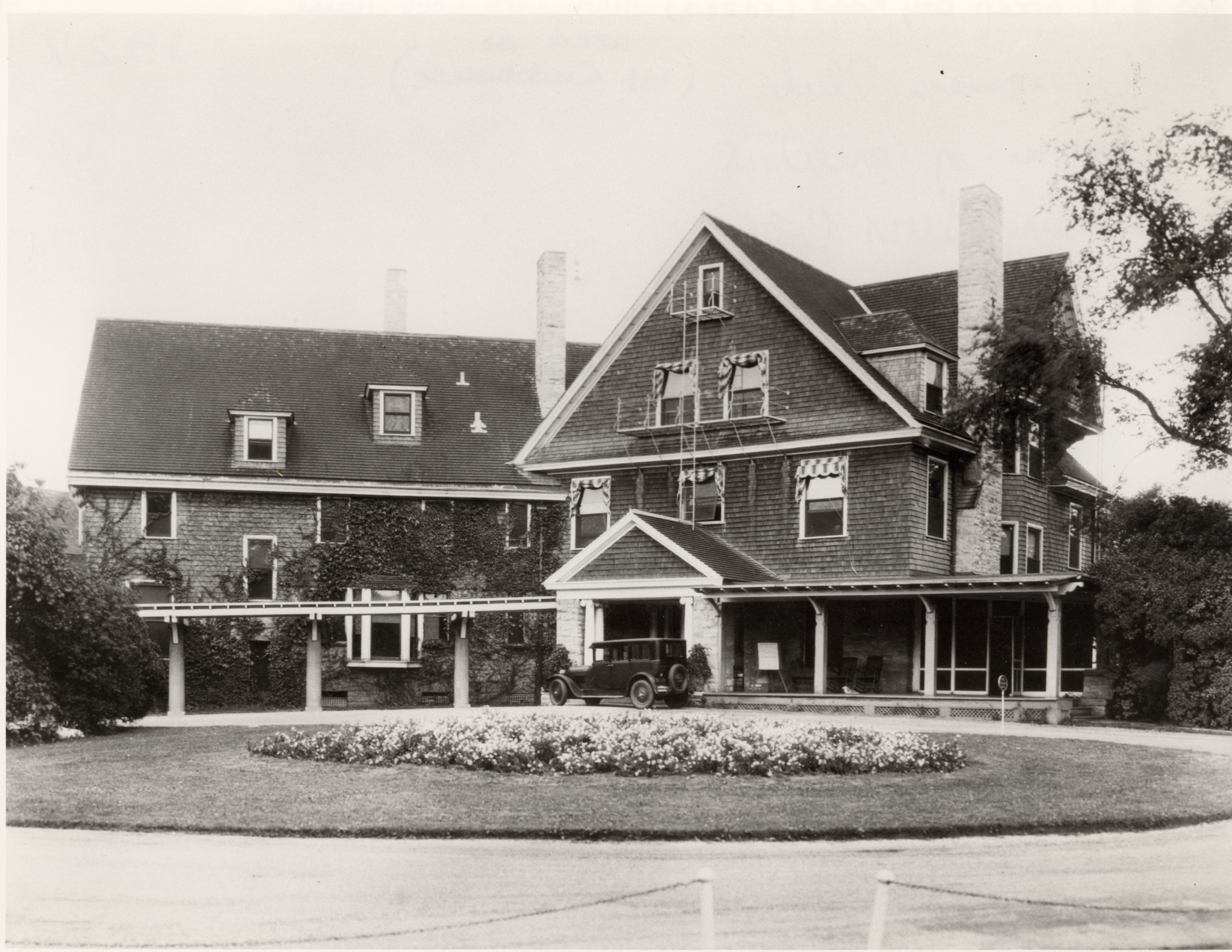
By the mid-1920s, Onwentsia’s original clubhouse had been added on to many times and was beginning to come apart at the seams. Difficulty in obtaining fire insurance finally convinced the club to replace it. Selecting an architect proved awkward, given the number of gifted architects among the membership; finally, the club decided for the sake of diplomacy to engage New York architect Harrie T. Lindeberg, who had designed several Lake Forest country houses but was not a local resident.

The new French style clubhouse was completed in 1928. Lindeberg conceived of Onwentsia as a kind of large country home. He was fond of an impressive roof, which he called “the hat,” and Onwentsia’s tall, segmented hipped roof falls in this line.
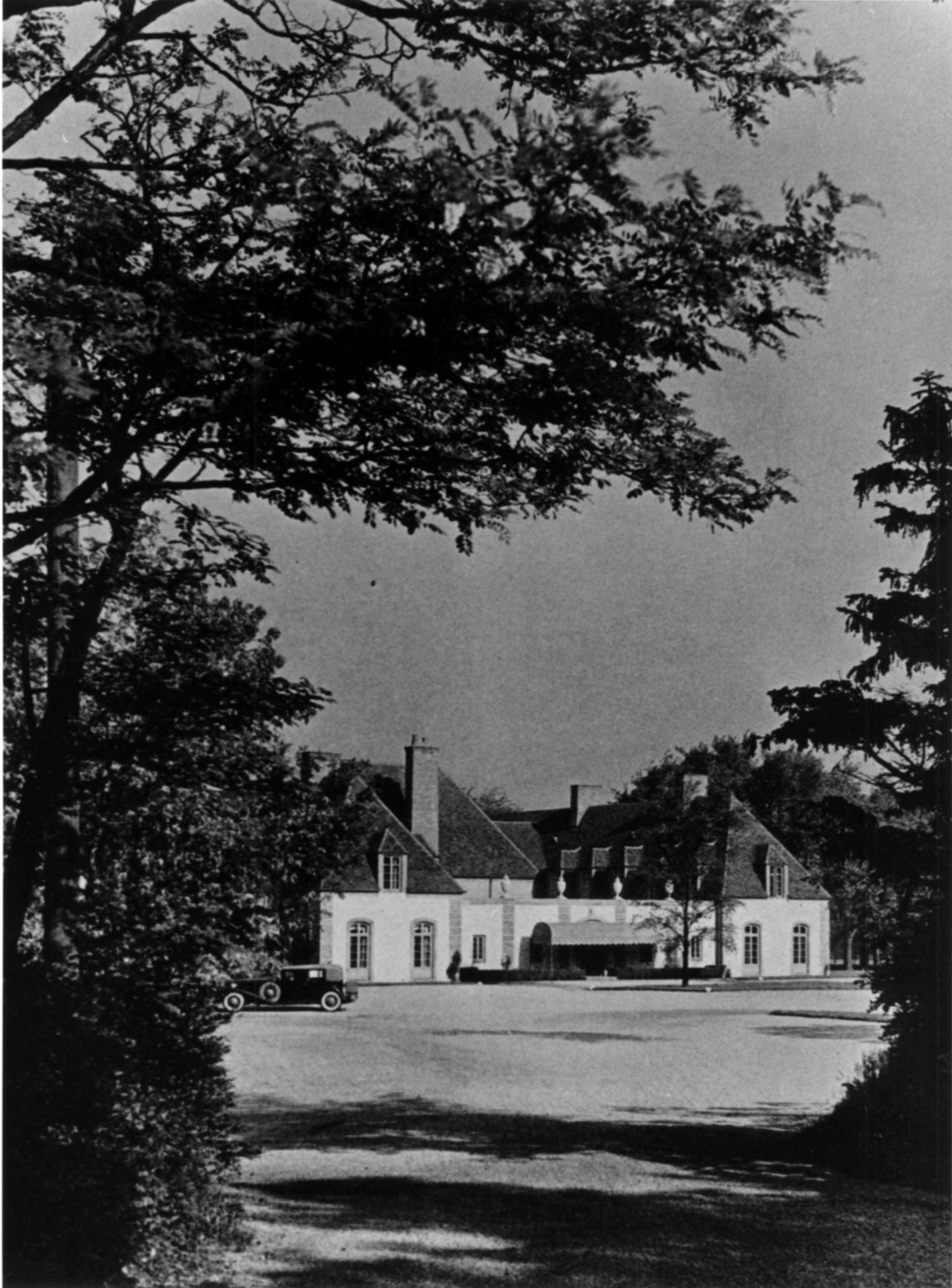
For increased weekend lodging capacity, in 1899 two cottages with four apartments each were added to the grounds for members up from Chicago or for out-of-town guests. These were torn down when the new clubhouse was built in 1927, but the new Deerpath Inn, built the next year just a few blocks away, stepped in to fulfill a similar role.
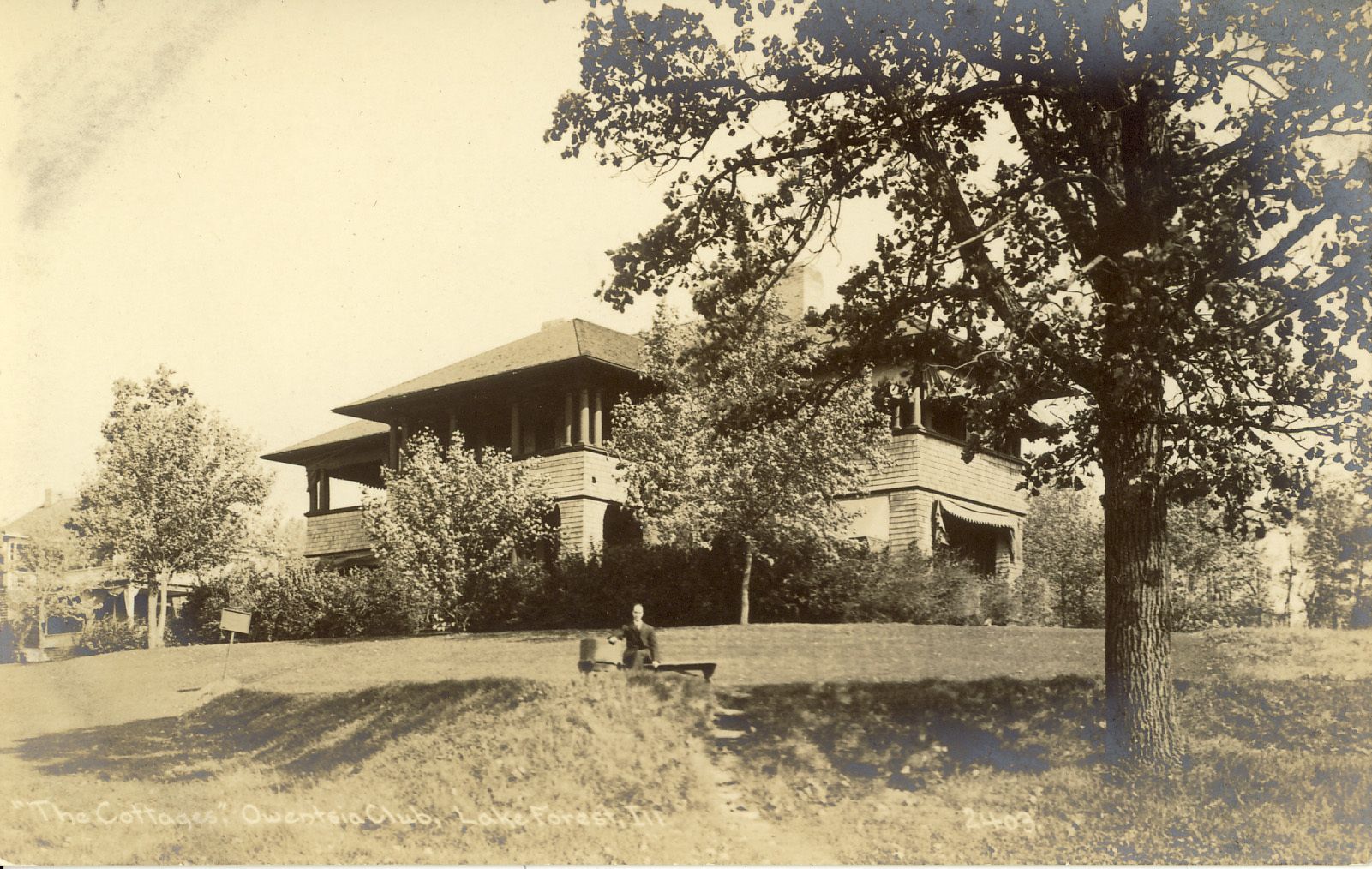
Onwentsia quickly grew into a social center, as well as a model for future area clubs. Top Scottish pros taught golf to members who could also exert themselves on the polo field, in the hunt, on the grass tennis courts, and at the horse shows. The Saturday Evening Herald called it a “perfectly balanced country club” and “one of the strongest organizations of its kind in the west.”
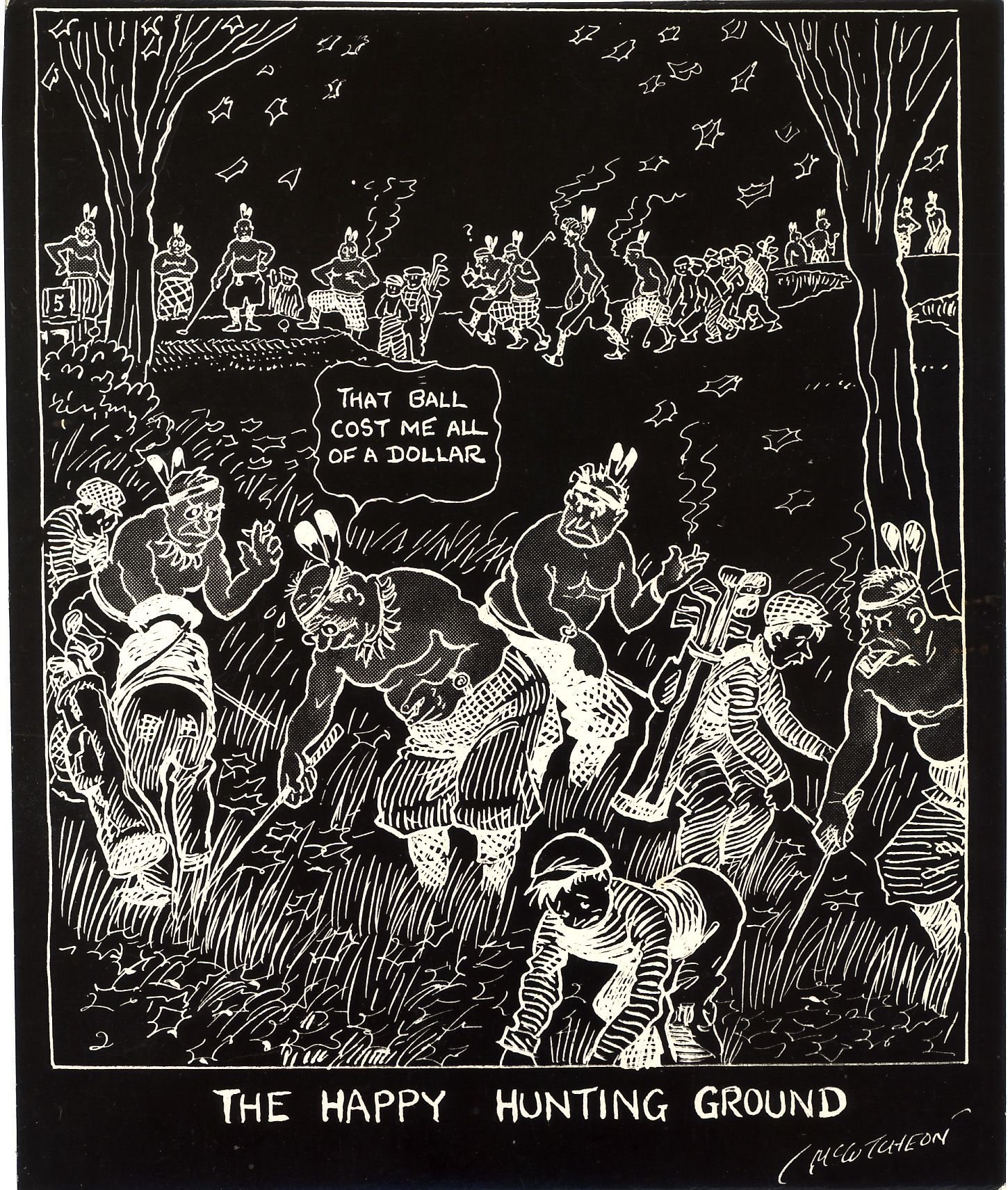
This cartoon drawn by John T. McCutcheon, an early Onwentsia member, served as the cover of the program for the Onwentsia Club’s 18th Pow Wow, October 4, 1930. The cartoon pokes fun at the wealthy Onwentsia members and their “no-stoned-unturned” searches for $1.00 golf balls.
The Pow-Wow, a golf tournament which takes place annually in the fall to wind up the season, is one of Onwentsia’s signature events. It began in 1906 and has been held ever since, with a few breaks and modifications for war and Prohibition. Early participants wore blankets and headdresses in echo of Native American harvest-time customs, and a “Big Chief” was appointed as toastmaster for the dinner.
Though as much a social gathering as a competitive tournament, golf at the Pow-Wow could be exciting. In 1951, Henry K. Gardner managed an improbable shot that allowed his foursome to capture the tournament by one stroke. His tee shot on the 11th had gone awry, ending up on the pumphouse roof. Rather than taking a stroke, Gardner played his shot right from the roof, making the green and going on to save par.